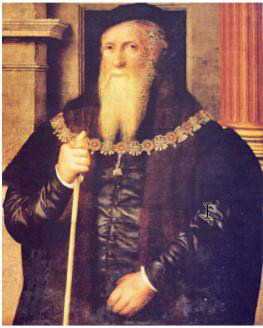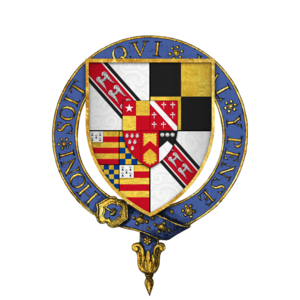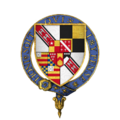Anthony Wingfield facts for kids

Sir Anthony Wingfield (died 15 August 1552) was an important English soldier, politician, and courtier. He was also a Member of Parliament (MP) and a Knight of the Garter, which is a very special award from the King. He came from Letheringham in Suffolk. Sir Anthony served as the top official in Suffolk, like a governor, from 1551 to 1552. He was also a high-ranking helper in the King's palace, called the Vice-Chamberlain of the Household, during the time of King Edward VI.
Contents
The Wingfield Family Home
The Wingfield family lived at a place called Letheringham, near Wickham Market in Suffolk. For many years, the land belonged to the Bovile family. Later, in the 1300s, the land passed to the Wingfield family when Margaret Bovile married Sir Thomas Wingfield.
Sir Anthony Wingfield was born before 1488. His father was Sir John Wingfield, and his mother was Anne Tuchet. Sir John was an important person in the area, serving as the chief law officer for Norfolk and Suffolk in 1483. He fought in the Battle of Bosworth Field in 1485 against King Richard III. After Henry VII became king, Sir John was given important roles, like managing lands for the King.
Sir Anthony's Life and Work
Serving the King in Battle
By 1509, when his father died, Anthony was already a personal attendant to King Henry VII. He even attended the King's funeral. Sir Anthony first saw action in a war during King Henry VIII's reign. He fought in a big battle in France called the siege of Tournai in 1513. He was made a knight for his bravery in capturing Tournai.
He became the chief law officer for Norfolk and Suffolk in 1515–16. In 1520, he attended the famous Field of the Cloth of Gold, a grand meeting between King Henry VIII and the King of France. He also fought in the French war of 1523 and helped capture Boulogne in 1544.
Working in Parliament
Sir Anthony Wingfield was chosen to be a Member of Parliament (MP) for Suffolk several times (in 1529, 1536, 1539, and likely 1542). While he was fighting in Boulogne, he was also elected as an MP for Horsham in 1545. His last time serving as an MP was for Suffolk in 1547.
His Role at Court
By 1539, Sir Anthony Wingfield was a member of the Privy Council, which was a group of trusted advisors to King Henry VIII. He also helped manage the King's royal household.
He received a very special honor: he was made a Knight of the Garter on St George's Day in 1541. This is one of the highest honors a person can receive in England.
When King Henry VIII died in 1547, Sir Anthony was one of the people chosen to carry out the King's wishes in his will. He was given £200 and led the guard at the King's funeral procession.
Sir Anthony remained a member of the King's council during the time when Somerset was in charge as Protector for the young King Edward VI. However, when Somerset lost power in 1549, it was Sir Anthony who the council sent to arrest him and bring him to the Tower of London.
In 1550, he was appointed to a financial role called the Chamberlain of the Exchequer, which he held until his death.
On 28 August 1551, Sir Anthony, along with other important officials, went to see Princess Mary Tudor (who would later become Queen Mary I). They were sent by King Edward's council to tell her and her household to stop holding Catholic Mass, as the country was becoming Protestant. Sir Anthony was sent to replace Mary's previous manager, who had refused to give this order.
His Death and Family
Sir Anthony Wingfield died on 15 August 1552 in Bethnal Green. His funeral was a grand event on 21 August. His body was carried in a procession with singing and his armor displayed.
Sir Anthony married Elizabeth Vere by 1528. Together, they had many children: eight sons and seven daughters. Some of his notable children included Sir Robert Wingfield, who also became an MP, and Anthony Wingfield, who served as Black Rod, an important official in Parliament.
Sir Anthony was survived by five of his sons: Sir Robert, Charles, Anthony, Henry, and Richard.
See Also
- Wingfield family
Images for kids



